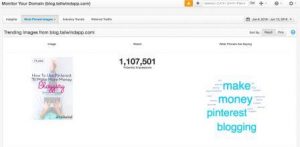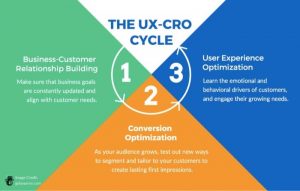by Jack Loechner, Staff Writer @mp_research, October 26, 2016
IBM Marketing Cloud’s annual report of email marketing benchmarks offers marketers open, click through, list churn and mobile metrics to help you see where you rank, delivering more visuals so you can better understand the data, and sharing more observations to help improve your marketing programs.
The IBM Marketing Cloud’s 2016 survey examines messages sent by nearly 750 companies and 3,000 brands in 2015, using a wide variety of measurements to establish benchmarks on customer engagement (via multiple open, click and device/email client metrics) and list churn (hard bounces, unsubscribes and complaints).
Editor’s Note: With selected edits and layout modifications, the report introduction is offered here verbatim for your review. For the complete IBM report, please follow the source address at the conclusion.
This year, there are several new measures and comparisons to give you deeper insights into email performance. Key findings include:
1. Non-holiday emails outperformed holiday-period messaging.
- Retail and ecommerce-focused marketers frequently change their game plans during the shopping-centric months of November and December, often ramping up frequency and shifting message content
- The report compares performance on a set of metrics between 2015 holiday emails sent during the heavy shopping period corresponding to the roughly six weeks from the U.S. Thanksgiving holiday through Christmas Day and New Year’s Eve, and non-holiday messages, or those sent the rest of the year
- The mean (average) open rate was 18.8% lower during the holiday season. The mean click-through rate was down 28.6% on holiday messages. However, the click-to-open rate varied less than 1 percentage point between the two time periods
- The findings suggest that some retailers’ failure to deliver personalized content and offers is resulting in lost engagement and revenue
2. The “frequency math effect” surfaced.
- During heavy volume time frames, the higher cadence of emails typically produces fewer opens and clicks per message sent but more opens and clicks in total. This can be attributed to the “frequency math effect.” Suppose you double your frequency, but see open or click rates going down by 15 to 20% from one message to the next. But, during the entire sending period you should have a marked increase in total opens and clicks
- Similarly, you can also expect to see hard bounces, spam complaints and unsubscribe rates decline when you raise frequency. Frequency math is at work here, too. That’s because you’re likely sending many more messages, so your total list churn over the sending period will be higher
- To better gauge the impact of frequency variations, look at both per-message statistics and cumulative open, click-through and list churn metrics for an entire period. By doing so, you’ll be able to more accurately determine whether cadence changes have driven an overall net positive or negative impact on your email efforts
3. Mobile email readership is highest in emerging economies and the United Kingdom, while Retail & Ecommerce had the lowest engagement rates.
- Emails sent in the United Kingdom and the “Rest of World” region (Asia/Pacific, Mexico/Central/South America, South Africa and India) had the highest mobile readership, at roughly 55%. Higher consumer mobile adoption in emerging economies is likely driving the latter area’s higher mobile readership
- Overall, 53% of emails tracked were classified as “Read,” meaning recipients spent at least eight seconds looking at them, while 26% were glanced at (two seconds or less) and 22% were skimmed (read more than two seconds but less than eight)
- Among industry sectors, Retail & Ecommerce (47%) and Schools & Education (43%) had the lowest “Read” rates as well as the highest “Glanced” rates (32% for Retail; 34% for Schools)
- Your own engagement rates could vary greatly from your industry’s average, so it’s important to track and understand your brand’s specific situation. Your layout, content, and calls to action need to align with the device/email client your subscribers are using
Most studies focus only on “average” benchmarks. However, in today’s super competitive marketplace, “average” has become the new bottom. The report encourages the reader to set sights higher. Compare your company’s open, click-through and list churn results to those you find in the top and bottom quartiles for each measurement as well as the mean and the median.
According to the study, the open rate works best as an in-house benchmark to track over time, because it can signal progress or problems with engagement. It’s also not a completely accurate metric because it doesn’t capture all opens due to image blocking and other factors. In other words, says the report, track your open rate for comparison to your other messages, but don’t use it as a sole measure of campaign success.
Unique Open Rate (by Country/Region) | ||||
| Open Rate (Unique) | |||
Country/Region | Mean | Median | Top Quartile | Bottom Quartile |
Overall | 21.8% | 18.3% | 41.6% | 7.9% |
United States | 21.3% | 17.6% | 40.9% | 7.9% |
Canada | 32.2% | 29.5% | 52.9% | 15.6% |
United Kingdom | 24.3% | 21.2% | 43.1% | 10.9% |
Rest of Europe | 19.4% | 15.5% | 37.7% | 6.9% |
Middle East & North Africa | 12.0% | 9.5% | 27.0% | 2.0% |
Australia & New Zealand | 32.9% | 27.8% | 58.1% | 16.2% |
Rest of World | 21.1% | 20.5% | 37.7% | 7.3% |
Source | ||||
Unique Open Rate (by Industry) | ||||
| Open Rate (Unique) | |||
Industry | Mean | Median | TopQuartile | BottomQuartile |
Automobiles & Transportation | 27.3% | 24.1% | 47.3% | 11.8% |
Banks & Financial Services | 23.3% | 18.7% | 46.5% | 7.8% |
Computer Hardware & Telecommunications | 24.9% | 22.5% | 44.6% | 9.1% |
Computer Software & Online Services | 20.8% | 17.4% | 39.8% | 7.5% |
Consumer Products | 25.1% | 21.1% | 48.1% | 8.6% |
Consumer Services | 21.6% | 19.0% | 40.9% | 7.4% |
Corporate Services | 23.0% | 20.3% | 41.9% | 9.1% |
Food Service, Sports & Entertainment | 20.7% | 16.6% | 42.3% | 5.9% |
Hospitals, Healthcare & Biotech | 26.1% | 23.3% | 49.4% | 8.1% |
Industrial Manufacturing & Utilities | 25.9% | 22.5% | 46.5% | 10.9% |
Insurance | 27.5% | 24.4% | 50.2% | 10.2% |
Lodging, Travel Agencies & Services | 22.7% | 18.5% | 40.8% | 11.3% |
Marketing Agencies & Services | 18.2% | 13.6% | 37.4% | 6.5% |
Media & Publishing | 19.3% | 16.5% | 34.8% | 8.5% |
Nonprofits, Associations & Government | 26.4% | 23.8% | 43.1% | 14.4% |
Real Estate, Construction & Building Products | 25.6% | 23.4% | 41.6% | 13.7% |
Retail & Ecommerce | 20.5% | 16.8% | 39.2% | 8.0% |
Schools & Education | 30.9% | 27.3% | 58.7% | 8.4% |
Source | ||||
IBM Marketing Cloud (formerly known as Silverpop) is a cloud-based digital marketing provider that offers email marketing, lead-to-revenue management and mobile engagement solutions. To gain access to the service, please visit here.
MediaPost.com: Search Marketing Daily
(22)






